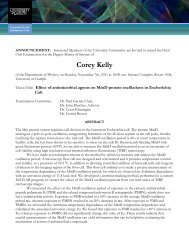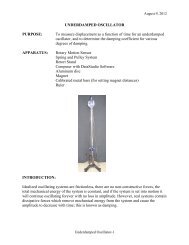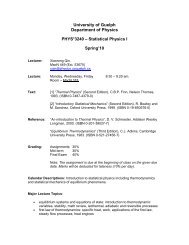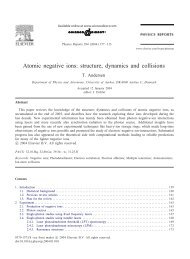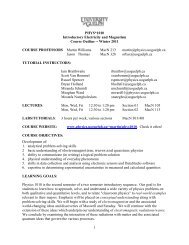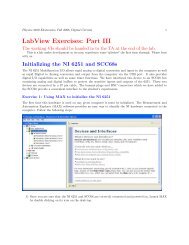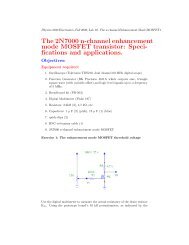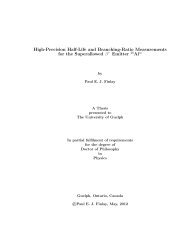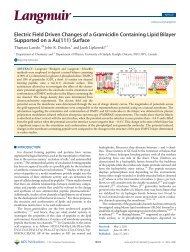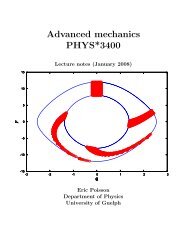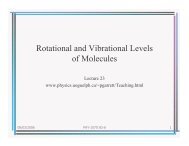Geant4 Simulations for the Radon Electric Dipole Moment Search at
Geant4 Simulations for the Radon Electric Dipole Moment Search at
Geant4 Simulations for the Radon Electric Dipole Moment Search at
You also want an ePaper? Increase the reach of your titles
YUMPU automatically turns print PDFs into web optimized ePapers that Google loves.
used around <strong>the</strong> measurement cell in order to maintain a st<strong>at</strong>ic magnetic field. Un<strong>for</strong>tun<strong>at</strong>ely,<br />
this shielding between <strong>the</strong> EDM cell and <strong>the</strong> γ-ray detectors will also<br />
<strong>at</strong>tenu<strong>at</strong>e <strong>the</strong> emitted γ rays from <strong>the</strong> decaying radon nuclei; <strong>the</strong>reby lowering <strong>the</strong><br />
over-all efficiency of <strong>the</strong> system. This effect was studied in <strong>the</strong> RnEDM simul<strong>at</strong>ions<br />
and is presented in Chapter 4. The simul<strong>at</strong>ed µMetal was <strong>for</strong>mul<strong>at</strong>ed from specific<strong>at</strong>ions<br />
given by The MuShield Company[40]. µMetal has a density of 8.747 g/cm 3<br />
and is composed of (by weight) 80.0% nickel, 14.93% iron, 4.20% molybdenum, 0.50%<br />
manganese, 0.35% silicon and 0.02% carbon.<br />
The simul<strong>at</strong>ed cerium-doped lanthanum bromide crystal was used in <strong>the</strong> construction<br />
of Saint-Gobain’s BrilLanCe 380 detector. The per<strong>for</strong>mance of this scintill<strong>at</strong>or<br />
and its role in <strong>the</strong> RnEDM experiment is discussed in Section 3.5.2. According to<br />
Saint-Gobain, <strong>the</strong>ir cerium-doped lanthanum bromide (LaBr 3 (Ce)) crystal has a density<br />
of 5.08 g/cm 3 with approxim<strong>at</strong>ely 5.0% cerium [41, 42].<br />
3.2.3 Volumes and Geometry<br />
Complex volumes and geometries are constructed from combin<strong>at</strong>ions of much<br />
simpler shapes (cubes, spheres, cylinders, cones, etc.). Each shape may have its own<br />
defined m<strong>at</strong>erial (see Section 3.2.2). From <strong>the</strong>se basic building blocks complic<strong>at</strong>ed<br />
geometries, such as <strong>the</strong> RnEDM experimental setup shown in Figure 3.1, can be<br />
constructed.<br />
The entire <strong>Geant4</strong> experimental geometry was built in a large cube defined as<br />
<strong>the</strong> “experimental hall”. The “experimental hall” was usually constructed of vacuum,<br />
but couldalsobedefinedasairoranyo<strong>the</strong>r m<strong>at</strong>erial. Eachcomponent of<strong>the</strong>detector<br />
and experimental setup was <strong>the</strong>n added into this volume, defined around a point of<br />
origin in <strong>the</strong> three-dimensional space. The origin was reserved <strong>for</strong> particle emission<br />
37



